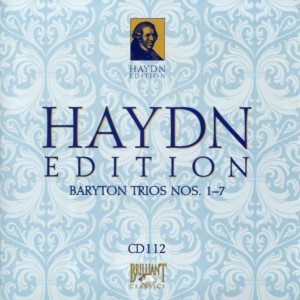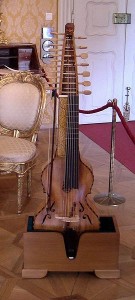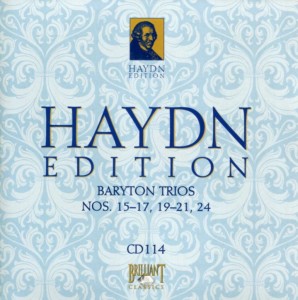 I remember seeing the phrase “Baryton Trios” many times over the course of my life.
I remember seeing the phrase “Baryton Trios” many times over the course of my life.
Until this morning, I thought Baryton was a place, a city perhaps. Like Berlin. Or Vienna. Or London.
Now I know baryton is the name of an instrument that looks somewhat like a viola or cello. (Photo below from this source.)
 So a Baryton trio is an ensemble of three musicians named for the lead instrument – the baryton.
So a Baryton trio is an ensemble of three musicians named for the lead instrument – the baryton.
Hey, look. I told you I wasn’t a musicologist. That’s why I take on these types of projects. I love music and I love to learn.
Here are some excerpts about the baryton from this article on Wikipedia:
The baryton is a bowed string instrument which shares some characteristics with instruments of the viol family, distinguished by an extra set of plucked strings. It was in regular use in Europe up until the end of the 18th century.
The baryton can be viewed as a sort of augmented bass viol. It is similar in size to the latter instrument and likewise has six or seven strings of gut, arranged over a fretted fingerboard and played with a bow. The instrument is held vertically and is supported by the player’s legs (rather than with an endpin as in the modern cello).
The baryton differs from the bass viol in having an additional set of wire strings. These perform two functions: they vibrate sympathetically with the bowed strings, enriching the tone, and they can also be plucked by the left thumb of the performer, creating a contrasting tonal quality.
The baryton was “completely neglected” (Hsu) in the nineteenth century, but in the twentieth, with the rise of the authentic performance movement in classical music, new barytons were built and played.
According to the Oxford English Dictionary, the name of the instrument is a loan word from French baryton or Italian baritono, and ultimately derives from Greek bary- + tonos ‘deep-pitched’. Alternate spellings include: bariton, barydon, paradon, paridon, pariton, viola paradon, viola di bordoni, [Italian] viola di bardone, [German] viola di bordone.
Here are some excerpts about Haydn’s Baryton Trios from Continue reading →
 I’m going to have to do some research on the baryton.
I’m going to have to do some research on the baryton.


